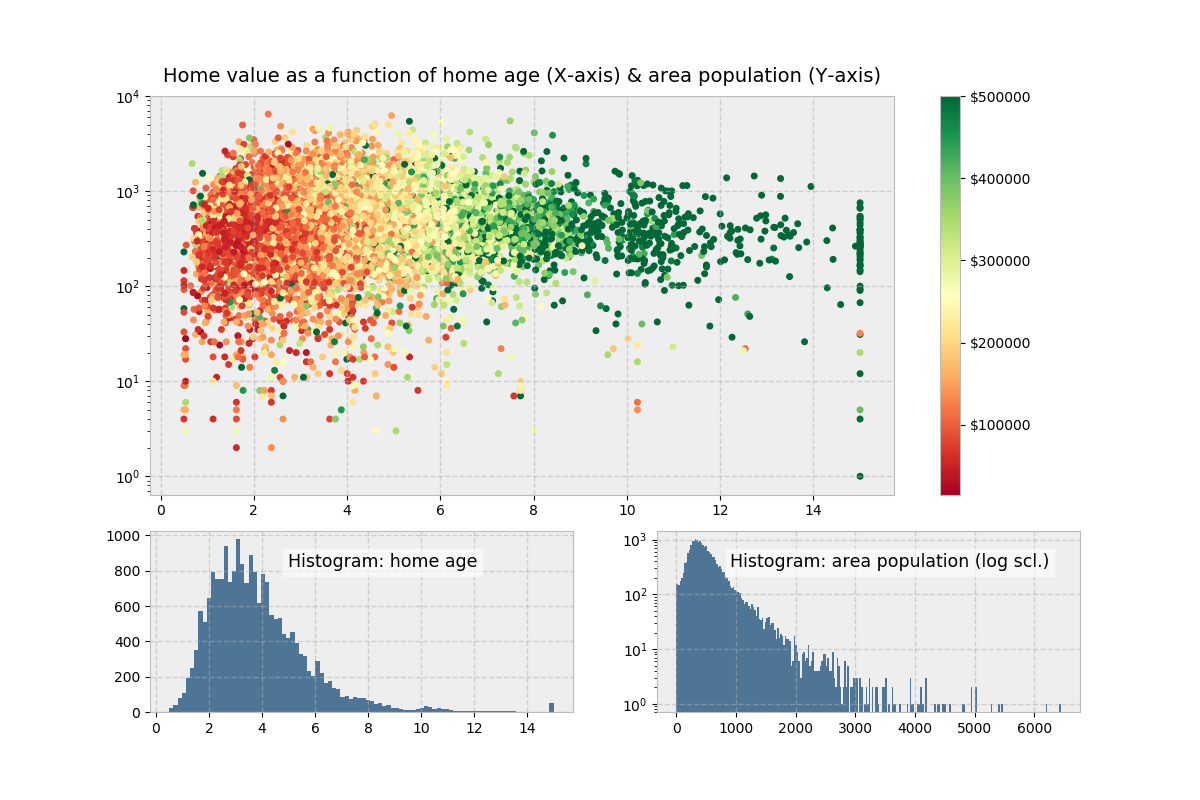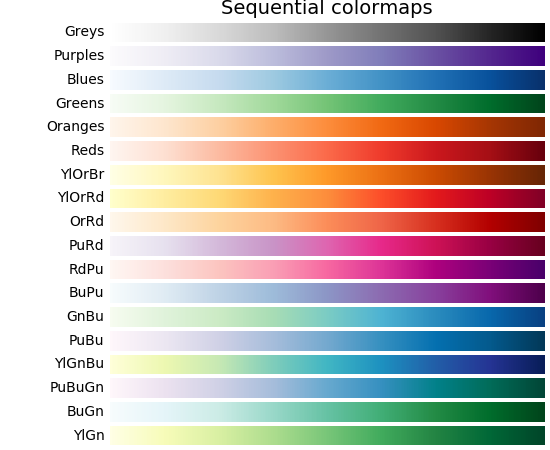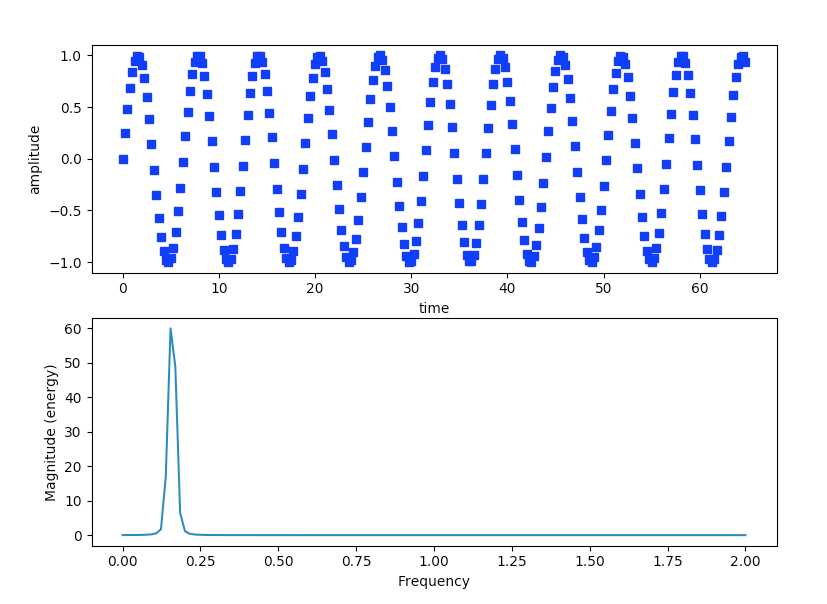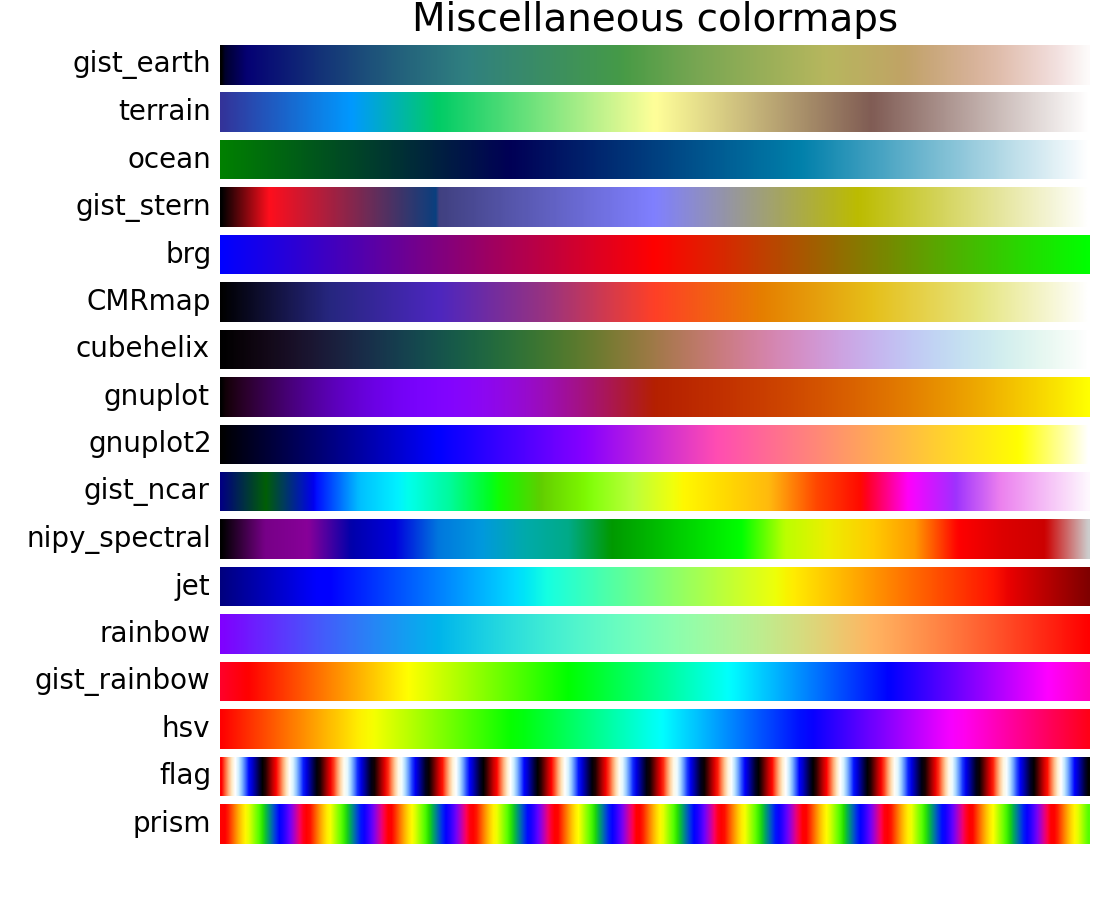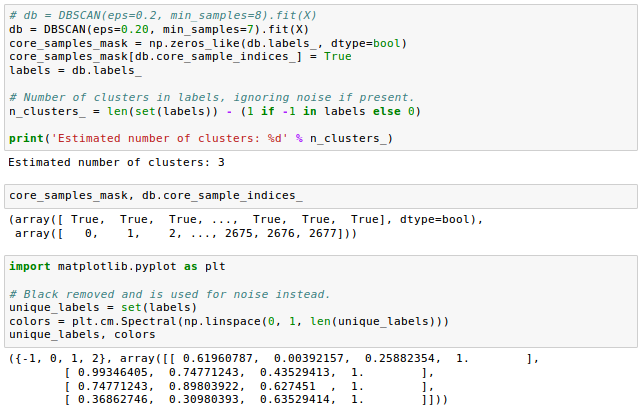Plots are a way to visually communicate results with your engineering team, supervisors and customers. In this post, we are going to plot a couple of trig functions using Python and matplotlib. Matplotlib is a plotting library that can produce line plots, bar graphs, histograms and many other types of plots using Python. If you downloaded Python from python.org, you will need to install matplotlib and numpy with pip on the command line. With the use of matplotlib library, we can generate multiple sub-plots in the same graph or figure.
Matplotlib provides two interfaces to do this task - plt.subplots and plt.figure(). Logic is similar in both the ways - we will have a figure and we'll add multiple axes (sub-plots) on the figure one by one.I created a dummy DataFrame for illustration. In this example, we have data for cities with cost of living scores (fake data!) of year 2017 and 2018.
We'll be using the 2D plotting library, matplotlib, which was originally written by John D. Hunter and since then has become a very active open-source development community project. It allows you to generate high quality line plots, scatter plots, histograms, bar charts, and much more. Each plot presents data in a different way and it is often useful to try out different types of plots before settling on the most informative plot for your data. It is good to keep in mind that visualization is a blend of art and science. The approach just described can become quite tedious when you're creating a large grid of subplots, especially if you'd like to hide the x- and y-axis labels on the inner plots. For this purpose, plt.subplots() is the easier tool to use .
Rather than creating a single subplot, this function creates a full grid of subplots in a single line, returning them in a NumPy array. The arguments are the number of rows and number of columns, along with optional keywordssharex and sharey, which allow you to specify the relationships between different axes. In this post, we are going to build a couple of plots which show the trig functions sine and cosine. We'll start by importing matplotlib and numpy using the standard lines import matplotlib.pyplot as plt and import numpy as np. This means we can use the short alias plt and np when we call these two libraries.
You could import numpy as wonderburger and use wonderburger.sin() to call the numpy sine function, but this would look funny to other engineers. The line import numpy as np has become a common convention and will look familiar to other engineers using Python. In case you are working in a Juypiter notebook, the %matplotlib inline command is also necessary to view the plots directly in the notebook. This tutorial outlines how to perform plotting and data visualization in python using Matplotlib library. The objective of this post is to get you familiar with the basics and advanced plotting functions of the library. It contains several examples which will give you hands-on experience in generating plots in python.
You can plot multiple lines from the data provided by a Dataframe in python using matplotlib. You can do it by specifying different columns of the dataframe as the x and y-axis parameters in the matplotlib.pyplot.plot() function. You can plot multiple lines from the data provided by an array in python using matplotlib. You can do it by specifying different columns of the array as the x and y-axis parameters in the matplotlib.pyplot.plot() function.
I have discussed about multiple types of plots in python matplotlib such as bar plot, scatter plot, pie plot, area plot etc. For this, I have to import numpy module which I discussed in my previous blog on Python Numpy. Let me implement it practically, consider the below example. In general most graphs can be broken down into a series of elements which, although typically related in some way, can all exist independently of each other. This allows us to create the graph in a rather piecemeal fashion.
The labels on the x and y axis are independent of the data values being represented. The title and the legend are also independent objects within the overall graph. In matplotlib you create the graph by providing values for all of the individual components you choose to include. We will be using seaborn style to create scatter plot of the time series data. Finally, we will be passing dates and values to plt.plot_date() method and call plt.show() to plot.
In this tutorial we will learn to create a scatter plot of time series data in Python using matplotlib.pyplot.plot_date(). We will use Pandas Dataframe to extract the time series data from a CSV file using pandas.read_csv(). The resulting plot looks exactly the same as the original but we added an additional call to plt.subplots()and passed the axto the plotting function. Remember when I said it is critical to get access to the axes and figures in matplotlib? Any future customization will be done via the axor figobjects.
It is a powerful python library for creating graphics or charts. It takes care of all of your basic and advanced plotting requirements in Python. It took inspiration from MATLAB programming language and provides a similar MATLAB like interface for graphics. The beauty of this library is that it integrates well with pandas package which is used for data manipulation. With the combination of these two libraries, you can easily perform data wrangling along with visualization and get valuable insights out of data. Like ggplot2 library in R, matplotlib library is the grammar of graphics in Python and most used library for charts in Python.
Notice that the fig and ax are created at the same time by setting them equal to the output of the pyplot.subplots() function. As no other arguments have been provided, the result is a figure with one plot that is empty but ready for data. Pyplot provides methods that can be used to add different components to figure objects, including creating the individual plots as axis objects, also known as subplots.
With this 3D axes enabled, we can now plot a variety of three-dimensional plot types. Another option for looking at multiple plots is to use multiple Axes; this is accomplished by passing our desired layout to subplots(). The simplest way is to just give it the number of rows and columns; in this case the axes are returned as a two dimensional array of Axes instances with shape .
A matplotlib plot can be understood from an object-oriented perspective. Each plot consists of a figure object , an axes object , and other objects such as a title, an axis, or a colorbar. So, in this tutorial we have learned to plot time series data in python from raw data as well as csv using pandas. We also learned how to change the scatter time series plot to line time series plot and much more. Let me first tell you the difference between a bar graph and a histogram.
Histograms are used to show a distribution whereas a bar chart is used to compare different entities. Histograms are useful when you have arrays or a very long list. Let's consider an example where I have to plot the age of population with respect to bin.
Now, bin refers to the range of values that are divided into series of intervals. In the below code, I have created the bins in the interval of 10 which means the first bin contains elements from 0 to 9, then 10 to 19 and so on. Given the importance of visualization, this tutorial will describe how to plot data in Python using matplotlib. We'll go through generating a scatter plot using a small set of data, adding information such as titles and legends to plots, and customizing plots by changing how plot points look. You can create figures with multiple plots by adding additional axis objects (e.g. ax1, ax2).Conversely, 2, 1 indicates that you want the plot layout to be 2 rows across one column.
The most basic method of creating an axes is to use the plt.axesfunction. As we've seen previously, by default this creates a standard axes object that fills the entire figure. Plt.axes also takes an optional argument that is a list of four numbers in the figure coordinate system.
These numbers represent in the figure coordinate system, which ranges from 0 at the bottom left of the figure to 1 at the top right of the figure. We'll now take an in-depth look at the Matplotlib tool for visualization in Python. Matplotlib is a multiplatform data visualization library built on NumPy arrays, and designed to work with the broader SciPy stack. It was conceived by John Hunter in 2002, originally as a patch to IPython for enabling interactive MATLAB-style plotting via gnuplot from the IPython command line. IPython's creator, Fernando Perez, was at the time scrambling to finish his PhD, and let John know he wouldn't have time to review the patch for several months. John took this as a cue to set out on his own, and the Matplotlib package was born, with version 0.1 released in 2003.
We'll now take an in-depth look at the Matplotlib package for visualization in Python. Matplotlib is a multi-platform data visualization library built on NumPy arrays, and designed to work with the broader SciPy stack. IPython's creator, Fernando Perez, was at the time scrambling to finish his PhD, and let John know he wouldn't have time to review the patch for several months. MATLAB, and pyplot, have the concept of the current figure and the current axes.
The function gca() returns the current axes (a matplotlib.axes.Axes instance), andgcf() returns the current figure (matplotlib.figure.Figure instance). Normally, you don't have to worry about this, because it is all taken care of behind the scenes. The function gca returns the current axes (amatplotlib.axes.Axes instance), and gcf returns the current figure (a matplotlib.figure.Figure instance). Normally, you don't have to worry about this, because it is all taken care of behind the scenes. It can be used as an alternative to subplot to specify the geometry of the subplots to be created.
We have to define after this, how much of the grid a subplot should span. Matplotlib is the most famous library for data visualization with python. It allows to create literally every type of chart with a great level of customization. This page provides some general tips that can be applied on any kind of chart made with matplotlib like customizing titles or colors. If you're looking at creating a specific chart type, visit the gallery instead.
Scatter plots are great for determining the relationship between two variables, so we'll use this graph type for our example. To create a scatter plot using matplotlib, we will use the scatter() function. The function requires two arguments, which represent the X and Y coordinate values.
As you can see we just replaced plt.plot() with plt.bar() and voila! The width attribute in the plt.bar() is just specifying the width of the bar. But for some reason, if you want to change the ticks, you need to use the function plt.xticks() for the x-axis and set the 'ticks' attribute value to the tick values you want. Pyplot provides a procedural interface to the matplotlib object-oriented plotting library. Therefore, the majority of plotting commands in pyplot have Matlab™ analogs with similar arguments. Important commands are explained with interactive examples.
It provides an API called pyplot that contains different types of plots, figures, and related functions to visualize data. A line chart is a type of chart/graph that shows the relationship between two quantities on an X-Y plane. If matplotlib were limited to working with lists, it would be fairly useless for numeric processing.
In fact, all sequences are converted to numpy arrays internally. The example below illustrates a plotting several lines with different format styles in one command using arrays. The example below illustrates plotting several lines with different format styles in one function call using arrays. The first string in the list corresponds to the first x-y pair when we called plt.plot() , the second string in the list corresponds to the second x,y pair in the plt.plot() line. To create the plot, we use matplotlib's plt.plot() function.
Below, we use the subplots() function, with no parameters, to quickly create a Figure, fig, and an Axes, ax, for us to plot on. We then use ax.plot to create a line plot on the Axes we created; this command uses pairs of values from the x and y arrays to create points defining the line. The following topics are not directly related to subplotting, but we want to present them to round up the introduction into the basic possibilities of matplotlib. The first one shows how to define grid lines and the second one is quite important. In this Matplotlib tutorial article, we discussed the basic concepts related to the Matplot library. We looked at how to create basic graphs and plots, and its different functions.
We discussed three-dimensional plotting and sub-plots as well. The object oriented API usually starts by initializing one Figure object and one or more Axes object using the subplot() function. Then the methods of those objects will be used to apply changes to the chart. So time-series is basically a dataset which involves time or date or months or years. But mostly, the datasets have time-series data in the form of strings.
So Pandas/Matplotlib recognizes it as mere text and hence will show wrong graphs and plots. Here we'll learn to add a title to multiple lines chart using matplotlib with the help of examples. In matplotlib, we have two ways to add a title to a plot. Now, let's plot the lines with different y-axis having different scales using the twinx() function of the axes. You can also set the color and fontsize of the different y-axis labels.
Now, you can see some identical trend of all the lines with the data. Actually, if you look at the code of plt.xticks() method (by typing ??plt.xticks in jupyter notebook), it calls ax.set_xticks() and ax.set_xticklabels() to do the job. This is a peek into the low-level artist objects that compose any Matplotlib plot. For more information on the options available in these functions, refer to their docstrings. If you are interested in three-dimensional visualizations of this type of data, see"Three-Dimensional Plotting in Matplotlib". If you are using Matplotlib from within a script, the functionplt.show() is your friend.
Plt.show() starts an event loop, looks for all currently active figure objects, and opens one or more interactive windows that display your figure or figures. To plot both sine and cosine on the same set of axies, we need to include two pair of x,y values in our plt.plot() arguments. If you try and only add three arguments as in plt.plot, your plot will not show sine and cosine on the same set of axes.
Next let's build a plot which shows two trig functions, sine and cosine. We will create the same two numpy arrays x and y as before, and add a third numpy array z which is the cosine of x. Matplotlib provides a wide array of ways to control the appearance of the plot. Below we adjust the line so that it is a thicker, red dashed line.




